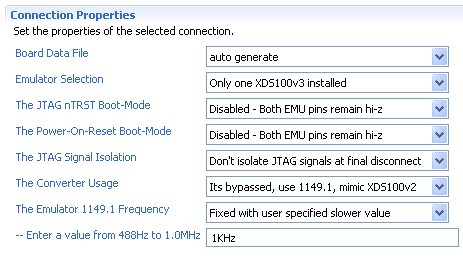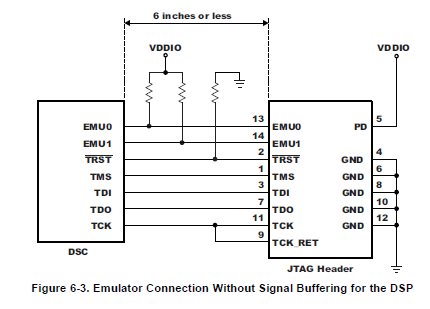I have a newly designed board featuring the F28335. I have been unable to program it thus far, getting either of these errors:
Error connecting to the target:
(Error -501 @ 0x0)
The built-in scan-path length measurement failed.
Error connecting to the target:
(Error -233 @ 0x0)
The JTAG IR and DR scan-paths cannot circulate bits, they may be broken.
I have discovered that the XRS' reset pin is periodically going low, approximately every 4.1 ms for a duration of 16 us. I see that this pin can double as a watchdog output, but I haven't even been able to program the chip once so far, the closest I got once was what appeared to be clearing the Flash.
We did have a power supply issue at first that lead the +3.3 V to rise to almost +5 V at times. That has since been fixed, but perhaps the F28335 is toast?
I have verified that the XDS100v3 that I'm using still can program our other Stellaris based project. I'm using CCS v5.
Any ideas what might be wrong here?



